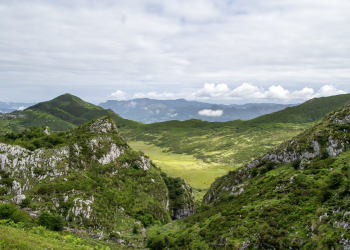Travel photography is a unique blend of adventure and artistry, requiring equipment that can withstand the rigors of the road while capturing breathtaking moments. Whether you’re a casual traveler or a seasoned explorer, selecting the right camera is crucial for immortalizing your adventures.
Compact vs. DSLR vs. Mirrorless Cameras
When it comes to travel photography, the choice between compact, DSLR, and mirrorless cameras boils down to personal preferences and shooting requirements. Compact cameras offer portability and ease of use, making them ideal for casual snapshots. DSLR cameras provide unmatched image quality and versatility, albeit at the cost of bulkiness. Mirrorless cameras strike a balance between size and performance, offering high-quality images in a compact form factor.
Considerations for Travel-Friendly Cameras
When choosing a camera for travel, factors such as size, weight, durability, and battery life should be carefully considered. Opt for lightweight and compact models that can withstand bumps and jostles during transit. Additionally, look for cameras with long battery life to ensure uninterrupted shooting sessions in remote locations.
Essential Camera Accessories for Travel
While the camera itself is crucial, the right accessories can elevate your travel photography experience to new heights.
Lenses: Versatility vs. Specialty
The choice of lenses plays a pivotal role in shaping the visual narrative of your travel photos. For versatility, consider investing in a standard zoom lens that covers a wide range of focal lengths. Alternatively, specialty lenses such as wide-angle or telephoto primes can add creative flair to your shots.
Tripods: Stability on the Go
A sturdy tripod is indispensable for capturing sharp images, especially in low light conditions or when shooting long exposures. Look for lightweight and compact tripods that can be easily carried in your camera bag without adding unnecessary bulk.
Filters: Enhancing Landscape Shots
Filters such as polarizers and neutral density filters can dramatically enhance the quality of your landscape photos by reducing glare, enhancing colors, and controlling exposure. Invest in high-quality filters that are compatible with your camera system for optimal results.
Protecting Your Gear
Traveling exposes your camera gear to various risks, including theft, accidents, and adverse weather conditions. Taking proactive measures to protect your equipment can save you from costly repairs or replacements down the line.
Camera Bags: Security and Accessibility
Invest in a durable and secure camera bag that offers ample protection against bumps, drops, and theft. Look for features such as padded compartments, weatherproofing, and anti-theft mechanisms to safeguard your gear while on the move.
Weatherproofing: Safeguarding Against Elements
Unpredictable weather is a common challenge faced by travel photographers. Ensure that your camera and lenses are weather-sealed to withstand rain, dust, and humidity. Additionally, carry a rain cover or protective sleeve for added protection during inclement weather.
Maximizing Battery Life
Running out of battery power in the midst of a photo shoot can be frustrating, if not downright disastrous. Implementing strategies to maximize battery life can help you avoid missing out on precious moments.
Battery Packs and Chargers
Invest in spare batteries and a portable charger to keep your camera powered up throughout your travels. Consider purchasing additional battery packs that are compatible with your camera model to ensure uninterrupted shooting sessions.
Conserving Battery Power on the Road
To prolong battery life, disable unnecessary features such as Wi-Fi, GPS, and image stabilization when not in use. Lowering the brightness of the LCD screen and avoiding excessive use of the built-in flash can also help conserve battery power.
Storage Solutions for Travel Photographers
With limited storage space and the need to back up your precious memories on the go, choosing the right storage solution is paramount for travel photographers.
Memory Cards: Capacity and Speed
Invest in high-capacity memory cards with fast read/write speeds to accommodate the large file sizes of modern cameras. Consider using multiple smaller cards rather than a single large one to minimize the risk of data loss due to card failure.
Backup Options: Cloud Storage and External Hard Drives
In addition to physical storage devices, utilize cloud storage services to back up your photos remotely. Carry an external hard drive or portable SSD for local backups, ensuring that your precious memories are always safe and accessible.
Editing Tools for Mobile Workflow
In today’s digital age, the ability to edit photos on the go is essential for travel photographers who wish to share their adventures in real-time.
Mobile Apps for Quick Edits
Explore the wide range of photo editing apps available for smartphones and tablets, offering features such as cropping, color correction, and filters. Opt for apps with intuitive interfaces and robust editing capabilities to streamline your workflow.
Portable Editing Devices
For more advanced editing tasks, consider investing in a portable editing device such as a laptop or tablet with sufficient processing power and storage capacity. Pair it with a stylus or external keyboard for enhanced productivity on the road.
Tips for Capturing Memorable Travel Photos
Beyond technical prowess, capturing memorable travel photos requires a keen eye for composition, lighting, and storytelling.
Understanding Composition and Lighting
Experiment with different compositional techniques such as the rule of thirds, leading lines, and framing to create visually compelling images. Pay attention to the quality and direction of light, adjusting your shooting angle and settings accordingly to achieve the desired mood and atmosphere.
Embracing Spontaneity and Authenticity
Some of the best travel photos are captured in the spur of the moment, capturing authentic emotions and interactions. Be open to serendipitous encounters and unexpected opportunities, allowing your creativity to flourish in unscripted moments.
Overcoming Common Challenges
Travel photography presents its fair share of challenges, from navigating crowded tourist attractions to dealing with adverse lighting conditions.
Dealing with Low Light Conditions
In low light situations, maximize your camera’s performance by using a wide aperture, increasing ISO sensitivity, and utilizing long exposure techniques. Consider investing in fast prime lenses or portable lighting solutions to overcome the limitations of ambient lighting.
Navigating Crowded Tourist Areas
Crowded tourist attractions can pose challenges for photographers seeking to capture clean and unobstructed shots. Arrive early or stay late to avoid the crowds, or embrace the hustle and bustle as part of the narrative of your photos.
Managing Equipment Weight and Bulk
Traveling light is essential for mobility and convenience, especially when exploring remote or off-the-beaten-path destinations. Prioritize essential gear and accessories, opting for lightweight and multipurpose items whenever possible to minimize the strain on your back and shoulders.
Staying Inspired and Creative
Travel photography is as much about the journey as it is about the destination. Stay inspired and motivated by exploring new perspectives and immersing yourself in the local culture.
Exploring Different Perspectives
Challenge yourself to see familiar subjects in new and innovative ways, whether through unconventional angles, unique compositions, or experimental techniques. Embrace the opportunity to tell compelling stories through your lens, capturing the essence of a place beyond its surface appearance.
Engaging with Local Cultures
Immerse yourself in the local culture and traditions, forging connections with the people you encounter along the way. By engaging with locals and experiencing their way of life firsthand, you’ll gain valuable insights and perspectives that will enrich your photography and storytelling.
Sharing Your Travel Photography
Once you’ve captured your travel memories, it’s time to share them with the world. From social media platforms to personal blogs, there are countless ways to showcase your work and connect with fellow enthusiasts.
Social Media Platforms and Online Communities
Harness the power of social media platforms such as Instagram, Facebook, and Twitter to share your travel photos with a global audience. Join online communities and photography forums to connect with like-minded individuals, exchange tips and feedback, and gain exposure for your work.
Creating Personal Blogs or Websites
For a more immersive and curated experience, consider creating a personal blog or website to showcase your travel photography portfolio. Use storytelling techniques, multimedia content, and interactive features to engage your audience and invite them on a visual journey through your travels.
Conclusion
Travel photography is a rewarding pursuit that allows you to capture the beauty and diversity of the world around us. By choosing the right camera and accessories, protecting your gear, and honing your creative skills, you can create stunning images that immortalize your adventures for years to come.

FAQs After The Conclusion
1. How do I choose the best camera for travel photography? To choose the best camera for travel photography, consider factors such as size, weight, image quality, durability, and battery life. Evaluate your shooting preferences and requirements, and choose a camera that strikes the right balance between portability and performance.
2. What are the essential accessories for travel photography? Essential accessories for travel photography include lenses, tripods, filters, camera bags, spare batteries, and memory cards. These accessories help enhance the versatility, stability, and protection of your camera gear, ensuring that you’re always ready to capture the perfect shot.
3. How can I protect my camera gear while traveling? To protect your camera gear while traveling, invest in a durable and secure camera bag, weatherproof your equipment, and implement strategies to prevent theft and damage. Additionally, consider purchasing insurance coverage for added peace of mind.
4. How do I maximize battery life during travel photography? To maximize battery life during travel photography, carry spare batteries and a portable charger, conserve power by disabling unnecessary features, and optimize camera settings for efficiency. Additionally, keep batteries warm in cold weather and avoid overcharging to prolong their lifespan.
5. What are some tips for capturing memorable travel photos? To capture memorable travel photos, focus on composition, lighting, and storytelling. Experiment with different techniques, embrace spontaneity, and seek out unique perspectives and interactions to create compelling and evocative images.
6. How do I overcome common challenges in travel photography? To overcome common challenges in travel photography, such as low light conditions, crowded tourist areas, and equipment limitations, adapt your shooting techniques, plan ahead, and stay flexible and creative. Embrace challenges as opportunities for growth and experimentation.
7. How can I stay inspired and creative while traveling? To stay inspired and creative while traveling, immerse yourself in the local culture, engage with your surroundings, and challenge yourself to see familiar subjects in new and innovative ways. Stay curious, open-minded, and receptive to new experiences and perspectives.
8. What are the best ways to share my travel photography with others? To share your travel photography with others, leverage social media platforms, online communities, and personal blogs or websites. Tailor your content to your audience, engage with followers, and use storytelling techniques to create a captivating and immersive experience.











